परिचय: मार्केटप्लेस बाजार और परिदृश्य
फैशन मार्केटप्लेस के 2030 तक फैशन की कुल ऑनलाइन बिक्री के 50% तक पहुंचने की उम्मीद है, इस कारण से फैशन ब्रांडों को फैशन मार्केटप्लेस प्रबंधन में सफल होने के लिए आवश्यक कौशल तुरंत हासिल करने की आवश्यकता है।
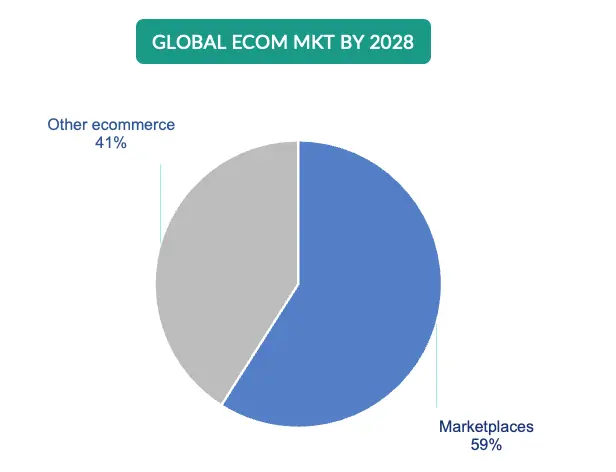
Marketplaces like Farfetch, MyTheresa and Zalando offer the opportunity to reach new consumers and increase sales volumes. However, large marketplaces put constraints to what brands can and can’t do and impose processes that fashion brands need to strictly follow if they want to be present on these fashion marketplaces online.
फैशन बाज़ार क्या है?
A fashion marketplace is an online platform that connects multiple fashion brands and retailers with consumers, allowing various sellers to showcase and sell their products in a centralized digital space. Unlike traditional e-commerce stores operated by single brands, these fashion marketplaces offer a diverse range of styles, price points, and brands, providing consumers with a comprehensive shopping experience. Whether it’s a mainstream online fashion marketplace or a niche luxury fashion marketplace, consumers can discover a wide variety of options.
Want to Master Marketplace Management?
Navigating the complex world of fashion marketplaces online requires careful planning and strategy. If you’re a fashion brand looking to optimize your presence across these platforms, keep reading this guide for expert insights. Plus, consider taking our Marketplace Management Online Course for an in-depth, hands-on approach to maximizing your sales and brand visibility across top platforms like Farfetch, MyTheresa, and Zalando. – leaders in the fashion online marketplace space.
What the Risks of Selling on Marketplaces?
Fashion Marketplaces present opportunities but also threats. For example, the high commissions fees that fashion brands have to pay to the marketplace fashion platforms, poses a significant threat to the लाभप्रदता of the online ecommerce sales on fashion marketplaces.
Another important decision for fashion brands is whether or not selling on specific fashion marketplace platforms in order not to go into competition with the main ecommerce channel of the brand or with wholesale clients who are selling online on fashion marketplaces in specific regions. Decisions around luxury brand positioning also play a critical role when it comes to choosing the right platforms.
If you work in a fashion brands and you want to learn how to manage fashion marketplaces keep reading this guide and consider taking the बाज़ार प्रबंधन ऑनलाइन पाठ्यक्रम. Learning to navigate marketplaces fashion effectively can help you scale while protecting your margins and brand image.
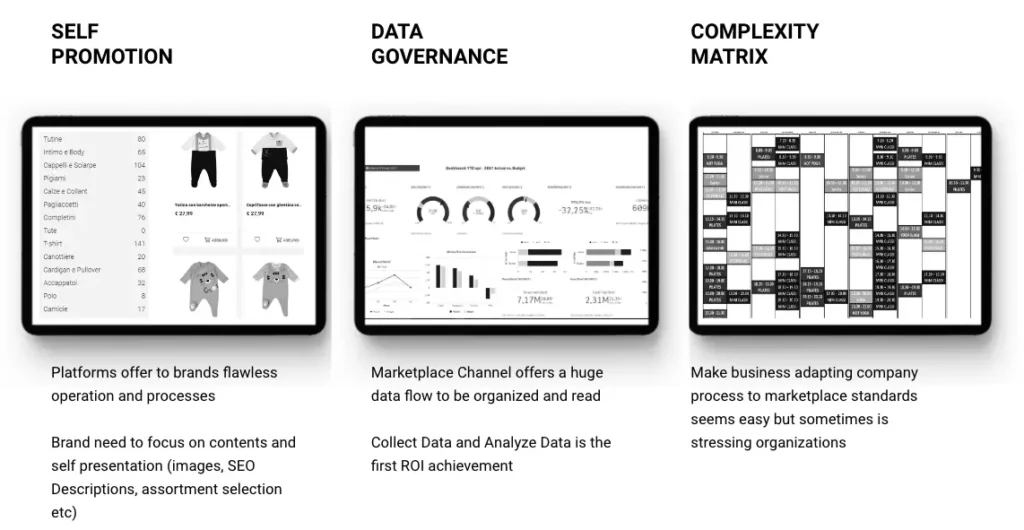
Use Cases: why selling on marketplaces.
A) The shoes brand A that is very strong in the southern Europe may utilize marketplaces in US and in the North of Europe to investigate the market potential leveraging the traffic of the marketplaces. For example the brand could integrate with Zalando, Galeries Lafayette and Miinto for the North of Europe and Neimann Marcus and Sacks Fifth Avenue for the US.
B) The clothing brand B needs to acquire new customers who may become brand lovers if they only tried the brand B products. The brand B decides to run a sales event on VeePee network where new customers can try the brand B products by buying the products with 50% to 70% discount. The happy customers will then become brands customer and buy also from the DTC ecommerce.
C) Brand C sells well jeans in North of Europe market but want to target people who buy total looks from luxury department stores, therefore Brand C decides to activate the Breuninger Marketplace and list a selection of products on the Department store’s marketplace so that the customers of the Department store can buy also the Brand C products when they shop for Looks
D) Brand D sees that its products are sold on a marketplace by a multitude of sellers who sell both second hand and new products, the Gross Merchandise value is estimated around 1 million Euros per year. The Brand D decides to open the official brand channel directly on the marketplace and acquired 75 percent of share of the brand sales on that specific marketplace.

किसी भी अतिरिक्त जानकारी के लिए आप लेखकों से संपर्क कर सकते हैं: एनरिको फैंटागुज़ी, फिलिपो क्वात्रोने। लेखकों के बारे में
Fashion marketplaces such as Farfetch, Zalando and Nordstrom offer a significant opportunity for fashion & luxury brands to दुनिया भर में नए ग्राहकों तक पहुँचें। तथापि, इस प्रतिस्पर्धी परिदृश्य में सफल होने के लिए रणनीतिक दृष्टिकोण की आवश्यकता होती है, tailored to the unique challenges of luxury brand positioning and a लागत और राजस्व की सावधानीपूर्वक योजना बनाना.
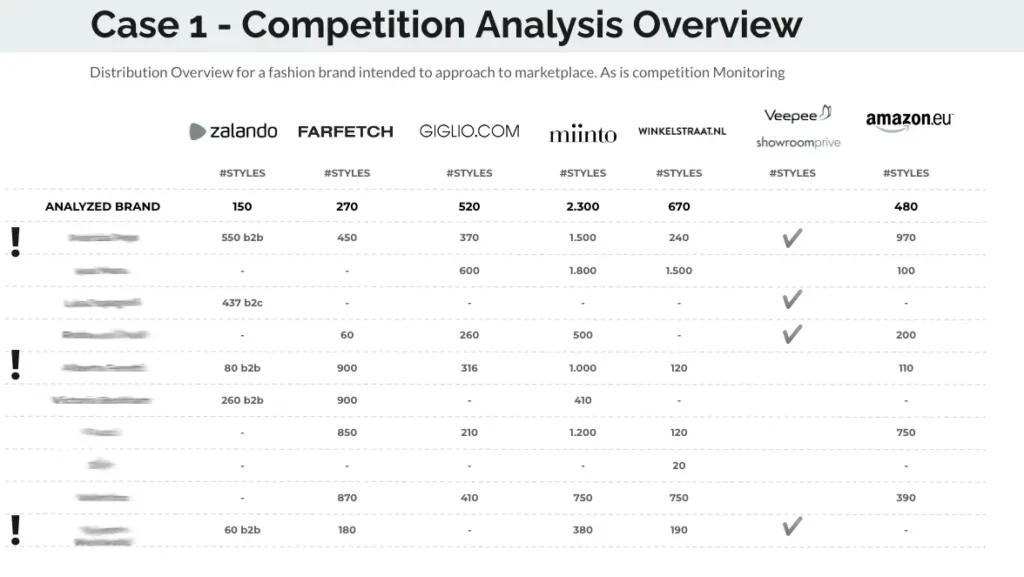
How Do the Marketplaces Work?
A fashion marketplace is an online platform that connects buyers and sellers जहां विक्रेता ब्रांड होते हैं और ग्राहक उत्पादों के अंतिम उपभोक्ता होते हैं, यह ब्रांड्स के लिए B2C बिजनेस मॉडल है।
Fashion marketplaces allow brands to virtually multiply the visibility of the products by publishing them on multiple sales channels (online marketplaces) while the products are sitting in the brand’s warehouse (Drop Shipping). These fashion marketplaces online enable scalable growth without upfront inventory relocation
Stock, prices, descriptions, images and fashion marketplace management strategy are controlled by the brand
Every time there is a sale on the fashion marketplace, the product is sold to the customer and shipped to the customer from the supplier – the brand or the seller.
Why Fashion Marketplaces Are a Major Opportunity for Fashion Brands
Selling on Marketplaces is important for fashion and luxury brands for a number of reasons:
- Internationalization: Marketplaces allow brands to reach new customers in many different countries.
- Low capex investments: Selling on online fashion marketplaces don’t require the set-up of an e-commerce platform and the costs are mainly variable.
- Low stock risk (Dropship Model): Fashion brands can sell the stock that they already have in their warehouse on multiple fashion marketplace online channels.
- New customer base: Markeplaces allow fashion brands to reach new customers.
- Reduce inventories: Marketplaces allow fashion brands to sell the same stock on different channels.
- Brand Image Control: The advantage of Marketplaces compared to resellers is that fashion brands can control price and image – crticial for luxury brand positioning.
- डेटा एकत्र करना: मार्केटप्लेस पर बिक्री करने से आपको विश्लेषण के लिए अधिक बिक्री डेटा एकत्र करने की सुविधा मिलेगी।
Ready to Maximize Your Brand’s Potential?
The fashion marketplace is an exciting and ever-evolving landscape, full of potential for brands aiming to grow their digital presence and reach new customer segments. From global giants like Zalando and Amazon to curated platforms like Farfetch and Yoox, each fashion marketplace offers unique opportunities to boost visibility, drive sales, and build brand recognition.
Success in this space isn’t just about showing up—it’s about mastering the rules, understanding the algorithms, and tailoring your strategies to each platform’s structure and audience. If you’re a fashion brand eager to tap into this goldmine of opportunity, learning how to effectively navigate and manage your fashion marketplace presence is not just beneficial—it’s essential.
Stay tuned for more expert insights, tips, and tools to help you thrive in the world of online fashion marketplaces.
A List of Fashion & Luxury Marketplaces With a Brief Description
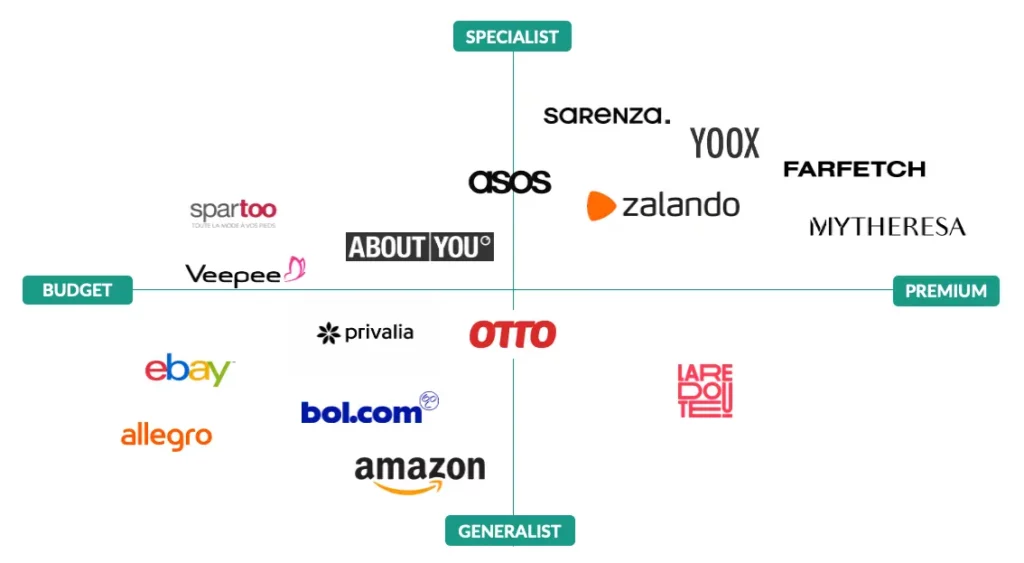
- farfetch: लक्जरी फैशन ब्रांड्स के लिए एक वैश्विक बाज़ार। यह ग्राहकों को दुनिया भर के ब्रांडों से जोड़ता है, और यह एक उच्च-स्तरीय खरीदारी अनुभव प्रदान करता है। हाल ही में केरिंग ग्रुप के कुछ ब्रांडों ने इस बाज़ार पर अपनी प्रत्यक्ष उपस्थिति कम करना शुरू कर दिया है। और पढ़ें फैशन नेटवर्क.
- ब्रुनिंजर: एक जर्मन डिपार्टमेंट स्टोर चेन जिसका ऑनलाइन मार्केटप्लेस है। यह फैशन ब्रांड के साथ-साथ घरेलू सामान और एक्सेसरीज़ की एक विस्तृत श्रृंखला प्रदान करता है।
- योओक्स: यह एक इतालवी ऑनलाइन रिटेलर है जो विभिन्न प्रकार के फैशन ब्रांड बेचता है, जिसमें लक्जरी और समकालीन दोनों शामिल हैं। यह सेकेंडहैंड कपड़ों के लिए पुनर्विक्रय बाज़ार भी प्रदान करता है।
- ज़ालैंडो: एक जर्मन ऑनलाइन फ़ैशन रिटेलर जो किफ़ायती से लेकर उच्च-स्तरीय तक कई तरह के ब्रांड बेचता है। यह स्वतंत्र ब्रांडों के लिए बाज़ार भी प्रदान करता है।
- मिंटो: फैशन ब्रांड के लिए एक डेनिश ऑनलाइन मार्केटप्लेस। यह ग्राहकों को पूरे यूरोप के ब्रांड से जोड़ता है, और यह कई तरह की स्टाइल प्रदान करता है।
- सैक्स फिफ्थ एवेन्यू: एक अमेरिकी लक्जरी डिपार्टमेंट स्टोर जिसका ऑनलाइन मार्केटप्लेस है। यह फैशन ब्रांड के साथ-साथ घरेलू सामान और एक्सेसरीज़ की एक विस्तृत विविधता प्रदान करता है।
- ओट्रियम: एक यूरोपीय फ्लैश सेल बाज़ार जो दुनिया भर के फैशन ब्रांडों पर 70% तक की छूट प्रदान करता है।
- वीपे: एक फ्रांसीसी फ्लैश सेल बाज़ार जो दुनिया भर के फैशन ब्रांडों पर 70% तक की छूट प्रदान करता है।
- 24s.com: एक यूरोपीय लक्जरी फैशन बाज़ार जो दुनिया भर के ब्रांडों का एक चयनित चयन प्रदान करता है।
- टीमॉल: यह एक चीनी बाज़ार है जो फैशन, घरेलू सामान और इलेक्ट्रॉनिक्स सहित कई तरह के उत्पाद प्रदान करता है। इसमें उच्च-स्तरीय ब्रांडों के लिए एक लक्जरी अनुभाग भी है।
- मेसी के: एक अमेरिकी डिपार्टमेंट स्टोर चेन जिसका ऑनलाइन मार्केटप्लेस है। यह फैशन ब्रांड के साथ-साथ घरेलू सामान और एक्सेसरीज़ की एक विस्तृत श्रृंखला प्रदान करता है।
4. फैशन बाज़ार में सफलता कैसे पाएं
फैशन मार्केटप्लेस पर बिक्री के लिए रणनीतियाँ
Success on an online fashion marketplace requires understanding the marketplace’s audience and aligning product offerings accordingly. High-quality images, detailed product descriptions, and competitive pricing are essential. Additionally, leveraging marketplace fashion promotions and participating in seasonal campaigns can enhance visibility on both mainstream and luxury fashion marketplace platforms.
दृश्यता के लिए उत्पाद लिस्टिंग को अनुकूलित करना
Optimizing your listings is a cornerstone of effective fashion marketplace management. Utilizing relevant keywords, clear titles, and comprehensive descriptions improves searchability within the marketplace. Incorporating customer reviews and maintaining high ratings also boost credibility and attract more buyers.
मार्केटप्लेस एल्गोरिदम और प्रमोशन का लाभ उठाना
Understanding and adapting to the marketplace’s algorithm can significantly impact product visibility. Engaging in promotional opportunities offered by the marketplaces – such as flash sales or featured listings, can drive traffic and increase sales. This is especially true for brands looking to strengthen their luxury brand positioning on curated fashion marketplaces.

कोई भी अपडेट न चूकें
हमारी मेलिंग सूची में शामिल हों और प्रशिक्षण कार्यक्रमों, नौकरी के अवसरों और मुफ्त संसाधनों पर अपडेट प्राप्त करें।
What Are the Differences Between Drop shipping and Concession Models?
ड्रॉप शिपिंग और रियायतों के बीच मुख्य अंतर को सारांशित करने वाली एक तालिका यहां दी गई है:
| विशेषता | जहाज को डुबोना | रियायतें |
|---|---|---|
| उत्पादों का स्वामित्व | व्यापारी उत्पाद का स्वामी नहीं है | व्यापारी उत्पाद का स्वामी नहीं है |
| सूची प्रबंधन | व्यापारी इन्वेंट्री का प्रबंधन नहीं करता | व्यापारी इन्वेंट्री का प्रबंधन नहीं करता |
| शिपिंग | व्यापारी शिपिंग का प्रबंध नहीं करता | व्यापारी शिपिंग का प्रबंध नहीं करता |
| मूल्य निर्धारण | व्यापारी कीमतें निर्धारित करता है | आपूर्तिकर्ता कीमतें निर्धारित करता है |
| आयोग | व्यापारी को कोई कमीशन नहीं मिलता | व्यापारी को प्रत्येक बिक्री पर कमीशन मिलता है |
| विपणन | व्यापारी विपणन के लिए जिम्मेदार है | आपूर्तिकर्ता विपणन के लिए जिम्मेदार है |
| ग्राहक सेवा | ग्राहक सेवा के लिए व्यापारी जिम्मेदार है | आपूर्तिकर्ता ग्राहक सेवा के लिए जिम्मेदार है |
Pros and Cons of Drop Shipping and Concession Models
Both drop shipping और concessions have their own advantages and disadvantages when selling on a fashion marketplace. जहाज को डुबोना is a more hands-off approach – often used in fashion marketplaces online, but it can be more difficult to control the customer experience.
रियायतें, on the other hand, give the merchant more control over the customer experience within the fashion online marketplace, but it can be more time-consuming and require more upfront investment in fashion marketplace management.
The best approach for a particular merchant will depend on their specific goals and circumstances. If a merchant is looking for a low-cost, hands-off approach, then drop shipping may be the best approach. If a merchant is looking for more control over their brand image and customer journey – particularly in luxury fashion marketplaces – then the concession model may be the better approach.
ड्रॉप शिपिंग और रियायतों के बीच चयन करते समय विचार करने के लिए कुछ अतिरिक्त कारक यहां दिए गए हैं:
Markeplaces Integration and Workflow
ऑर्डर प्रबंधन और बाज़ारों के साथ एकीकरण काफी जटिल हो सकता है और इसके लिए सटीक योजना, परिभाषा और संगठन की आवश्यकता होती है।
अब आप सीख सकते हैं कि बाज़ारों में अपने ब्रांड की बिक्री कैसे व्यवस्थित करें। बाज़ार ऑनलाइन पाठ्यक्रम Digital Fashion Academy द्वारा.
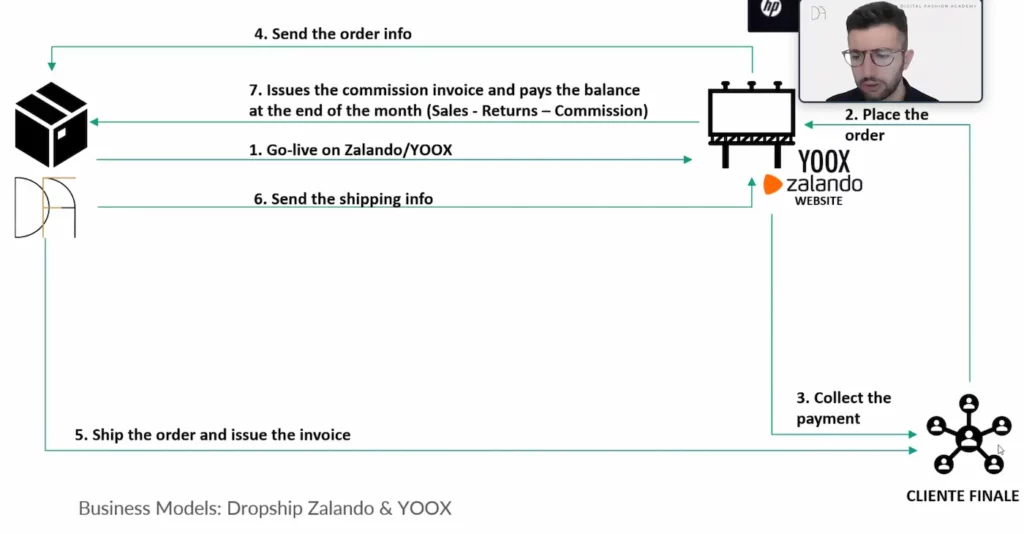
About the Authors

फ़िलिपो क्वात्रोने
मार्केटप्लेस यूनिट के प्रमुख – फिलोब्लू
रणनीतिक प्रबंधन सलाहकार फैशन ब्रांडों को मार्केटप्लेस चैनलों को शुरू से अंत तक सक्रिय करने में सहायता करता है।
उनका करियर विभिन्न उद्योगों और अंतर्राष्ट्रीय कंपनियों में 15 वर्षों का अनुभव रखता है, जिसमें एक्सेंचर, राल्फ लॉरेन, वैलेंटिनो और ओवीएस में प्रबंधन भूमिकाएं शामिल हैं।

एनरिको फैंटागुज़ी
Digital Fashion Academy के सह-संस्थापक
एनरिको फैंटागुज़ी एक फैशन और लक्जरी ई-कॉमर्स पेशेवर और सलाहकार हैं। उन्होंने कई ब्रांडों के लिए काम किया है गुच्ची, टॉड्स, वूलरिच और ई-रिटेलर्स जैसे योओक्स.
10 Questions About Fashion Marketplaces That We Answered in Our Online Course.
इससे पहले कि हम फैशन मार्केटप्लेस के बिजनेस मॉडल में गहराई से उतरें और हम बिजनेस प्लानिंग और एकीकरण जैसे विशिष्ट पहलुओं से निपटें, आप फैशन मार्केटप्लेस के बारे में सबसे आम सवालों के कुछ सीधे जवाब पा सकते हैं:
- ऑनलाइन बाज़ार किन परिस्थितियों में लाभदायक होते हैं?
- बाज़ार ब्रांड्स को यह सुविधा देते हैं कि वे नये बाजार खोलें जहाँ ब्रांड के पास विशिष्ट स्थानीय क्षमताएँ नहीं हैं या उनमें ब्रांड जागरूकता की कमी है। इस मामले में ब्रांड मार्केटप्लेस का उपयोग कर सकते हैं ब्रांड जागरूकता और बिक्री का विस्तार करें.
- एक अन्य स्थिति तब होती है जब ब्रांड के उत्पाद पहले से ही बाज़ार में बिक्री के लिए उपलब्ध हैं, लेकिन उन्हें कई अलग-अलग विक्रेताओं द्वारा बेचा जाता है, इस मामले में ब्रांड चाह सकता है कि वे अपने उत्पाद को अन्य विक्रेताओं से बेचें। चैनल पर नियंत्रण रखना सीधे बेचकर।
- क्या बाज़ार और प्रत्यक्ष उपभोक्ता (डीटीसी) ई-कॉमर्स के बीच कोई टकराव है?
- यह स्थापित करने के लिए कि क्या नरभक्षण हुआ है, हमें यह जानना होगा कि बिक चुके मूल्यों का विश्लेषण करें और यह श्रेणी और सर्वाधिक बिकने वाले उत्पादों के अनुसार बेचे गए उत्पादइस विश्लेषण के परिणामों के आधार पर आप यह निष्कर्ष निकाल सकते हैं कि क्या विभिन्न चैनलों के बीच संभावित नरभक्षण या तालमेल है। इस विषय के बारे में अधिक जानने के लिए देखें बाज़ार पाठ्यक्रम.
- ऑनलाइन बाज़ारों पर कीमतों को कैसे नियंत्रित करें?
- ब्रांड बाज़ारों में बिकने वाले मूल्यों पर नज़र रख सकते हैं: विशिष्ट अनुप्रयोगों का उपयोग करना जो बाज़ारों को स्कैन करते हैं और ब्रांडों को परिणाम प्रदान करते हैं। वैकल्पिक फैशन में ब्रांड इस विश्लेषण को सेवा प्रदाताओं को सौंपें जो आउटसोर्सिंग में फैशन ब्रांडों के लिए बाज़ार का प्रबंधन करते हैं।
- डिजिटल मार्केटप्लेस पर बिक्री के क्या लाभ हैं?
- इसके बारे में डेटा इकट्ठा करें विभिन्न बाज़ारों में उत्पाद वरीयताएँ;
- फैशन उत्पाद जीवनचक्र का लाभ उठाएँ प्रीमियम चैनलों पर नए उत्पाद और डिस्काउंट मार्केटप्लेस पर ऑफ-सीजन उत्पाद बेचकर;
- स्थानीय बाजारों के लिए विशेषीकृत बाज़ार, ब्रांडों को मदद कर सकते हैं उस विशिष्ट बाज़ार में ब्रांड जागरूकता और बिक्री बढ़ाना.
- बाज़ार ब्रांड्स को यह सुविधा देते हैं कि वे नए ग्राहक प्राप्त करें जो आम तौर पर उन विशिष्ट बाज़ारों से खरीदारी करते हैं और उन्हें ब्रांड के वफादारों में बदल देते हैं।
- बाज़ारों पर बेचने के नियम क्या हैं?
- बाज़ारों पर बेचने के लिए हमें बाज़ारों के सेवा स्तर समझौतों (एसएलए) का पालन करना होगा, उदाहरण के लिए शिपिंग और ग्राहक सेवा के लिए
- तकनीकी एकीकरण: कनेक्टर सॉफ्टवेयर, डेटाफीड और मैपिंग विनिर्देश
- सामग्री दिशानिर्देश: उत्पाद छवि विवरण, बाज़ार ब्रांड पृष्ठ सामग्री;
- जहां संभव और आवश्यक हो, वहां विपणन और विज्ञापन अभियान क्रियान्वित करें।
- बाज़ारों पर बेचने के लिए पूर्व-आवश्यकताएँ क्या हैं?
- बाज़ारों पर बेचने से पहले विक्रेता कंपनी को तैयार रहना चाहिए मानक ड्रॉप शिपिंग प्रक्रियाओं का समर्थन करें जिसमें शामिल हैं:
- लॉजिस्टिक्स बी2सी क्षमताएं: पिक, पैक, शिप, स्टॉक प्रबंधन।
- ग्राहक सेवा क्षमताएं.
- डिजिटल उत्पादन क्षमताएं (उत्पाद चित्र और विवरण)।
- मार्केटप्लेस पर मूल्य प्रतिस्पर्धा से कैसे बचें?
- मार्केटप्लेस पर मूल्य प्रतिस्पर्धा तब होती है जब कई विक्रेता एक या अधिक मार्केटप्लेस पर एक ही उत्पाद सूचीबद्ध करते हैं। सबसे अधिक बार ऐसा तब होता है जब कोई थोक ग्राहक या खुदरा विक्रेता भी मार्केटप्लेस पर बेचता है, उदाहरण के लिए जब मल्टी-ब्रांड बुटीक फ़ारफ़ेच पर बेचते हैं। इस स्थिति से बचने के लिए ब्रांड बाज़ार पर सीधे अपना चैनल खोलेंऐसा करने से ब्रांड बाज़ार में स्वाभाविक रूप से ब्रांड स्थान पर कब्ज़ा कर लेता है। (उपयोग केस डी देखें)
- इन-हाउस या आउटसोर्सिंग, कौन सा बेहतर है?
- निम्न में से एक सबसे बड़ी चुनौतियां जब किसी बाज़ार में बेचना शुरू करना होता है उत्पाद सूची बनाने के लिए बाज़ार की सभी विशिष्टताओं को जानें जो मार्केटप्लेस द्वारा निर्धारित मानकों का अनुपालन करता है। यदि ब्रांड के पास घर में कौशल नहीं है और यदि कोई समर्पित कर्मचारी नहीं है जो अपना अधिकांश समय मार्केटप्लेस पर काम करने में लगा सके, तो इस प्रक्रिया में कई महीने लग सकते हैं। मार्केटप्लेस के एकीकरण के लिए बाहरी सेवा प्रदाता का उपयोग करने से बाजार में आने का समय काफी कम हो सकता है।
- हमें बाज़ारों पर किन KPI पर नज़र रखनी चाहिए?
- बाज़ारों का समग्र लक्ष्य बिक्री बढ़ाना है, हालांकि कुछ महत्वपूर्ण हैं ऐसे मापदंड जो ब्रांड की सफलता निर्धारित कर सकते हैं बाज़ार में। उदाहरण के लिए, उच्च वापसी दर लाभप्रदता पर नकारात्मक प्रभाव पड़ सकता है चैनल की शिपिंग लागत के कारण जो आम तौर पर ब्रांड द्वारा भुगतान की जाने वाली 100% होती है। इसलिए आपको इसकी आवश्यकता है चैनल के शुद्ध मार्जिन या लाभ मार्जिन को देखकर उसका मूल्यांकन करें वित्तीय स्थिरता परियोजना का ही।
- अपने ब्रांड के लिए सही बाज़ार कैसे चुनें?
- आपको वह बाज़ार चुनना होगा जो आपके लिए उपयुक्त बिज़नेस मॉडल.
- आपको चुनना चाहिए विभिन्न भौगोलिक बाज़ारों के लिए अलग-अलग बाज़ार और विभिन्न उत्पाद के लिए जीवनचक्र, जैसे इन-सीजन, ऑफ-सीजन.
- एक करो बेंच मार्किंग अपने प्रतिस्पर्धियों का विश्लेषण करें और विश्लेषण करें कि वे किस बाज़ार में बिक्री कर रहे हैं।
चेक लिस्ट: क्या आपका ब्रांड फैशन मार्केटप्लेस पर बिकने के लिए तैयार है?
- परिचय
- आपके लक्ष्य क्या हैं और आप उन्हें कैसे प्राप्त करेंगे? सफलता मापें?
- एक करो बेंचमार्किंग विश्लेषण आपके प्रतिस्पर्धियों का
- सही बाज़ारों का चयन
- अपने लक्षित दर्शकों और बाजार पहुंच को समझें
- बाज़ार की प्रतिष्ठा, दर्शकों की जनसांख्यिकी और बिक्री की मात्रा का मूल्यांकन
- प्लेटफ़ॉर्म शुल्क और नीतियों को समझना
- उत्पाद लिस्टिंग का अनुकूलन
- बाज़ार-अनुकूल उत्पाद शीर्षक और विवरण तैयार करना
- बाज़ार के अनुकूल उत्पाद छवियाँ बनाएँ या संपादित करें
- खोज योग्यता बढ़ाने के लिए कीवर्ड और SEO का लाभ उठाना
- तकनीकी विनिर्देशों का पालन करते हुए उत्पाद फ़ीड को क्रियान्वित करें
- फैशन और लक्जरी बाज़ारों के लिए मूल्य निर्धारण रणनीतियाँ
- छूट नीति को समझें और उससे परिचित हों
- डेटा फ़ीड / कैटलॉग या एपीआई के माध्यम से मूल्य डेटा प्रवाह को एकीकृत करें
- वाणिज्यिक और प्रचार कैलेंडर पर चर्चा करें और उसे परिभाषित करें
- विशेष प्रचार और बिक्री आयोजनों पर सहमति
- ब्रांडिंग और दृश्य पहचान
- मार्केटप्लेस ब्रांड होम पेज के लिए संपत्ति बनाएं
- उत्पाद सूची के माध्यम से अपने ब्रांड की कहानी बताना
- विज्ञापन और संचार के लिए बैनर और अन्य परिसंपत्तियाँ बनाएँ
- सूची प्रबंधन
- किसी तीसरे पक्ष के मार्केटप्लेस इंटीग्रेटर या प्रत्यक्ष एकीकरण के माध्यम से स्टॉक प्रवाह को एकीकृत करें
- स्टॉकआउट और ओवरस्टॉकिंग से बचना
- मौसमी संग्रह और सीमित संस्करणों के लिए रणनीतियाँ
- पूर्ति और रसद संबंधी विचार
- ग्राहक सेवा एवं परिचालन
- ऑर्डर डेटा प्रवाह को एकीकृत और परीक्षण करें: बिक्री और रिटर्न
- सुनिश्चित करें कि ग्राहक सेवा बाज़ार के ग्राहकों की पूछताछ को संभालने में सक्षम है
- बाज़ारों पर ग्राहकों की पूछताछ और शिकायतों का निपटारा करना
- ब्रांड प्रतिष्ठा सुधारने के लिए ग्राहक प्रतिक्रिया का उपयोग करें
- विपणन और प्रचार
- बाज़ार विज्ञापन और प्रायोजित लिस्टिंग का लाभ उठाना
- सोशल मीडिया और अन्य चैनलों के साथ क्रॉस-प्रमोशन
- प्रभावशाली व्यक्तियों और ब्रांड एंबेसडरों के साथ सहयोग करना
- प्रदर्शन और विश्लेषण की निगरानी
- बिक्री, रूपांतरण दर और प्रमुख मीट्रिक पर नज़र रखना
- रणनीतियों और निर्णय लेने को परिष्कृत करने के लिए डेटा अंतर्दृष्टि का उपयोग करना
- विकास के अवसरों और संभावित चुनौतियों की पहचान करना
- बौद्धिक संपदा संरक्षण
- अपने ब्रांड की बौद्धिक संपदा की सुरक्षा के लिए रणनीतियाँ
- नकली उत्पादों और अनधिकृत विक्रेताओं से निपटना
- बाज़ारों पर ब्रांड संबंधी दिशा-निर्देश लागू करना